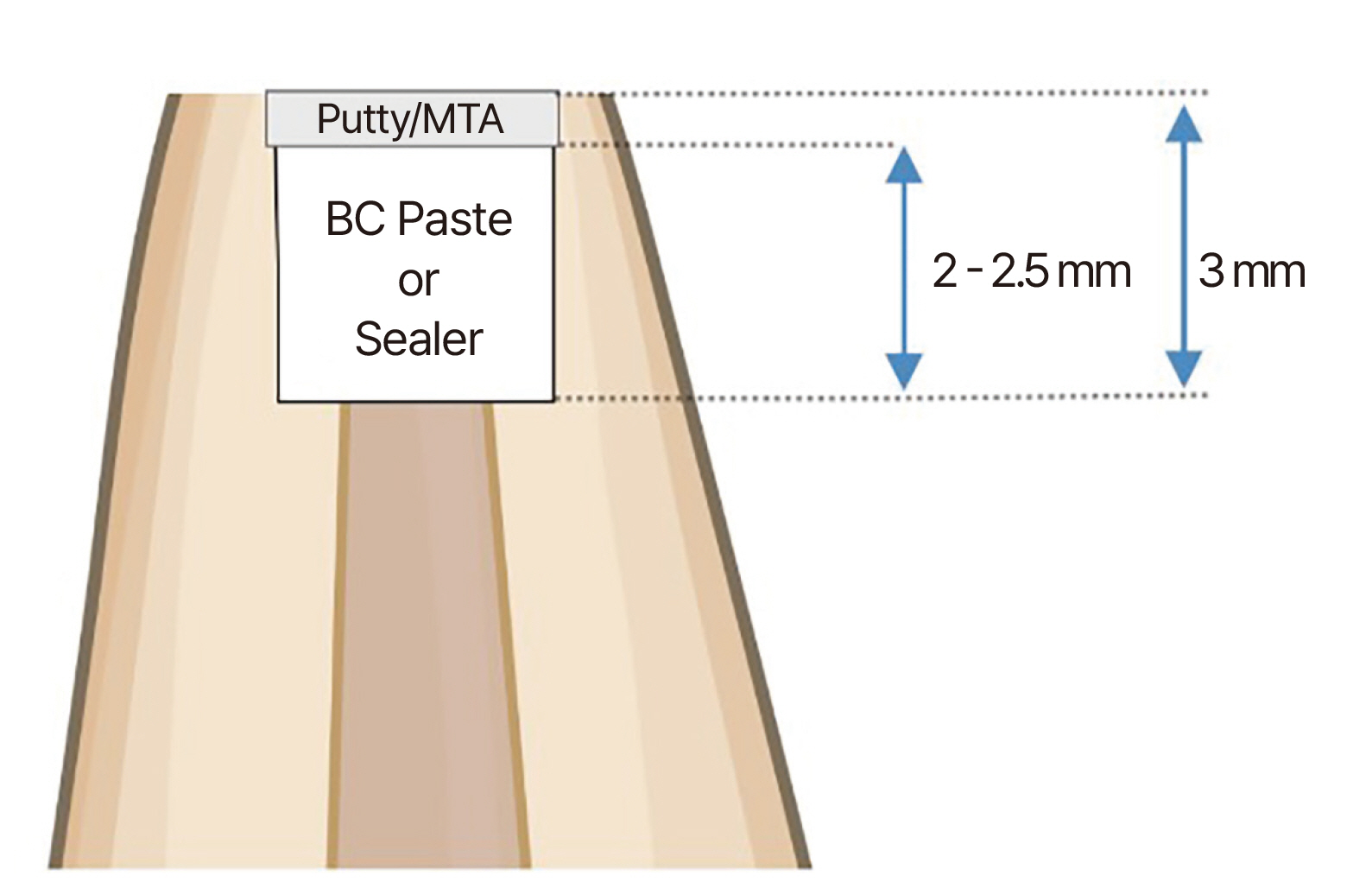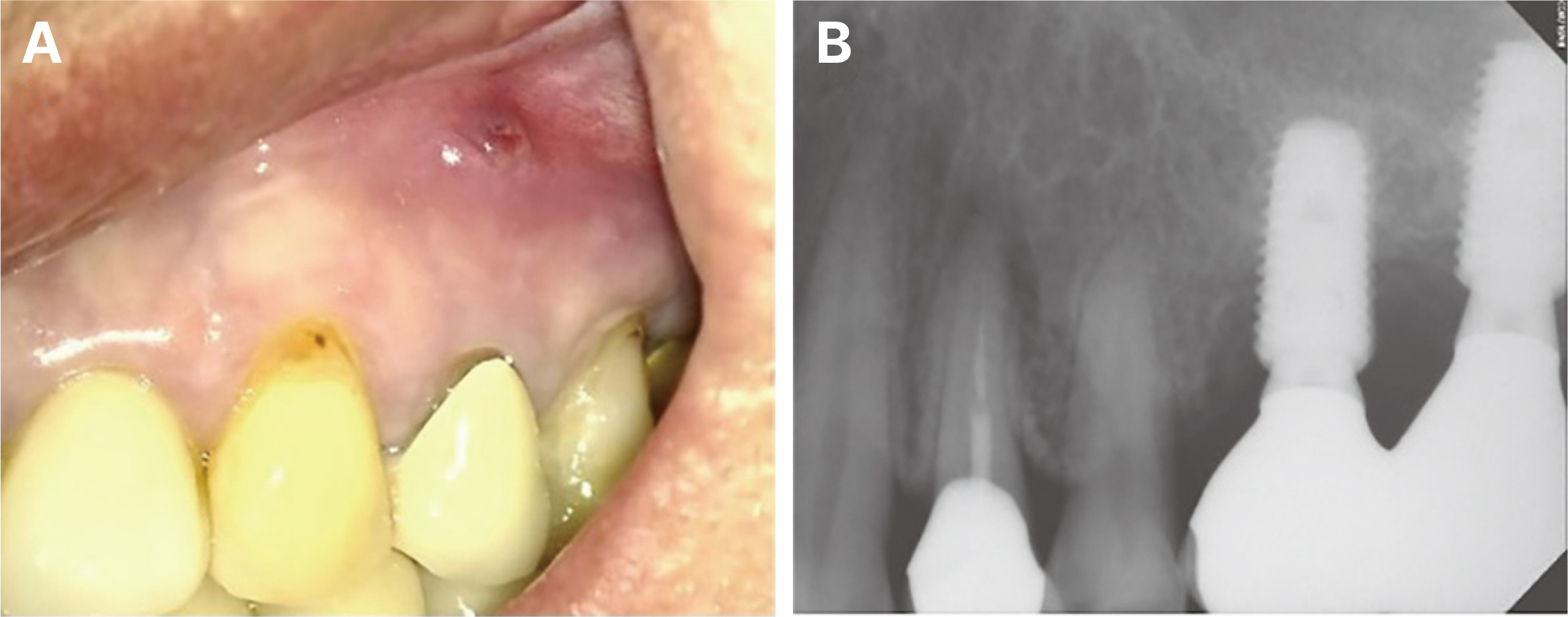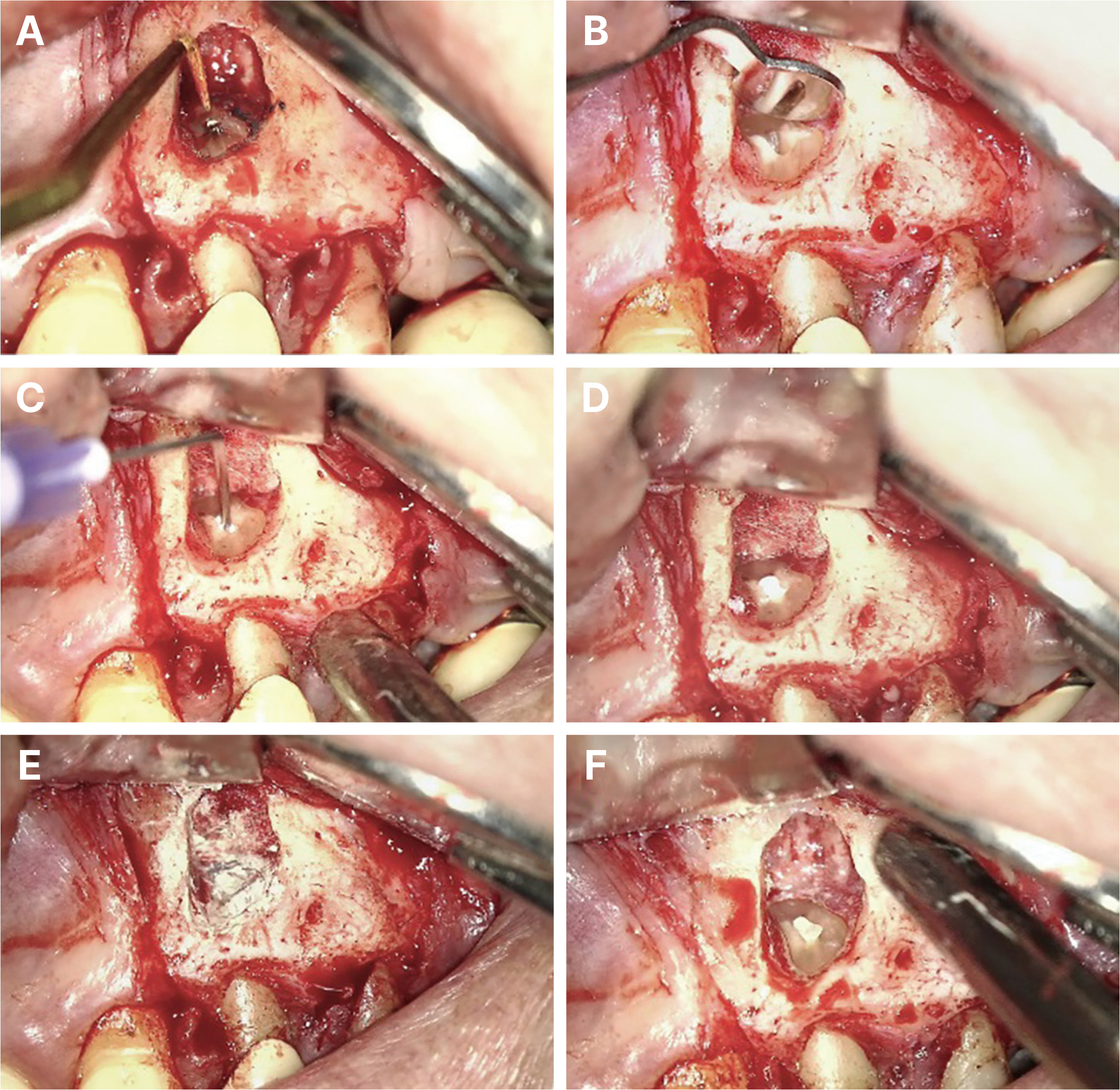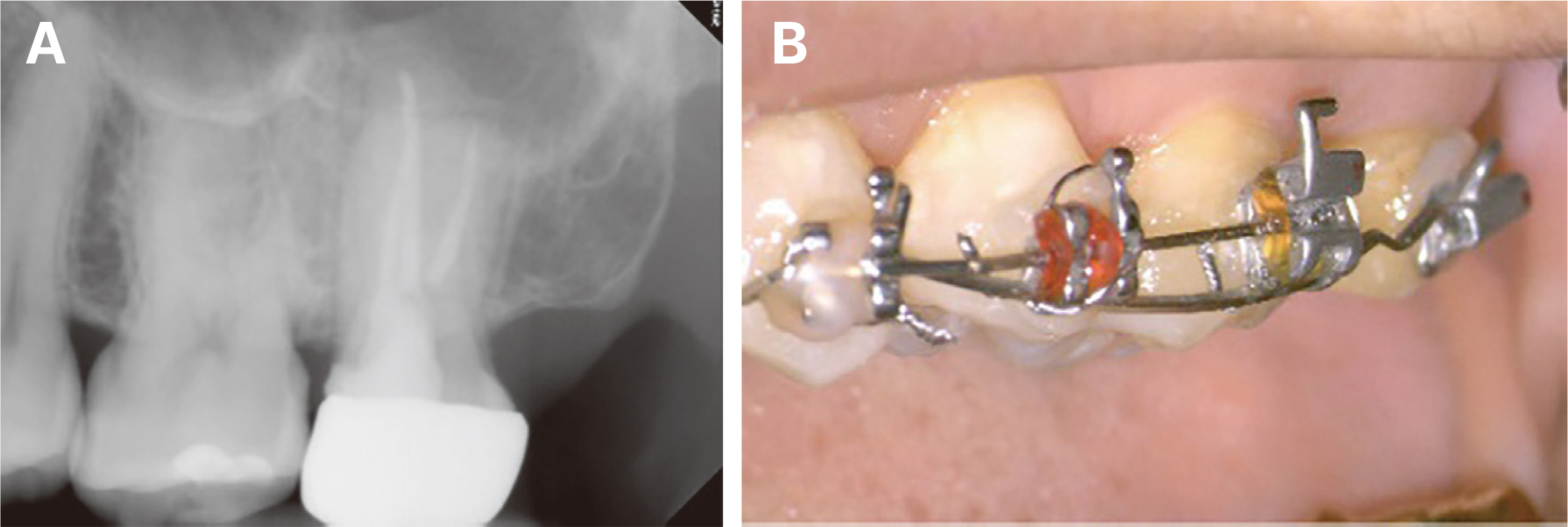J Dent Rehabil Appl Sci.
2023 Mar;39(1):45-51. 10.14368/jdras.2023.39.1.45.
Retrograde filling with Lid technique in periapical surgery: case report
- Affiliations
-
- 1Department of Conservative Dentistry, College of Dentistry, Gangneung-Wonju National University, Gangneung, Republic of Korea
- KMID: 2549251
- DOI: http://doi.org/10.14368/jdras.2023.39.1.45
Abstract
- Apical sealing with proper retrograde filling material and technique is the key factor for successful apical surgery. In order to provide impeccable apical sealing and healing, various mechanical and chemical characteristics of retrograde filling material is required. MTA has been used as the gold standard of retrograde filling due to its unprecedented advantages. As MTA has long setting time and difficult handling properties, premixed putty type bioceramic material has been newly developed. For efficient retrofilling with premixed putty type biocreamic material, ‘Lid technique’ was also proposed. The following cases present apical surgery using newly developed premixed putty type bioceramic material with Lid technique.
Figure
Reference
-
References
1. Chong BS, Rhodes JS. 2014; Endodontic surgery. Br Dent J. 216:281–90. DOI: 10.1038/sj.bdj.2014.220. PMID: 24651333.2. Antony JK, George L, Mathew J, Joy A. 2022; Sealing ability of mineral trioxide aggregate, Biodentine, and Endosequence RRM putty used as retrograde restorative material: An in vitro bacterial leakage model study. Endodontology. 34:16–21. DOI: 10.4103/endo.endo_176_21. PMID: 7f5247f643744764b99b0d59062a870c.
Article3. Li H, Guo Z, Li C, Ma X, Wang Y, Zhou X, Johnson TM, Huang D. 2021; Materials for retrograde filling in root canal therapy. Cochrane Database Syst Rev. 10:CD005517. DOI: 10.1002/14651858.CD005517.pub3. PMID: 34647617. PMCID: PMC8515509.4. Ali Nasseh A. 2022. Endodontic Practice Us. Available from: https://endopracticeus.com/premixed-nanoparticulate-bioceramics-endodontics-first-decade. updated 2022 July 18.5. Pereira IR, Carvalho C, Paulo S, Martinho JP, Coelho AS, Paula AB, Marto CM, Carrilho E, Botelho MF, Abrantes AM, Ferreira MM. 2021; Apical sealing ability of two calcium silicate-based sealers using a radioactive isotope method: An In Vitro Apexification Model. Materials. 14:6456. DOI: 10.3390/ma14216456. PMID: 34771981. PMCID: PMC8585189. PMID: 24f9f14b84c344478250d38dfb35f1fa.
Article6. Antunes HS, Gominho LF, Andrade-Junior CV, Dessaune-Neto N, Alves FRF, Rôças IN, Siqueira JF Jr. 2016; Sealing ability of two root-end filling materials in a bacterial nutrient leakage model. Int Endod J. 49:960–5. DOI: 10.1111/iej.12543. PMID: 26334201.7. Ali Nasseh A. 2022. Real World Endo. Available from: https://realworldendo.com/the-rwe-lid-technique-for-retrofilling-during-apicoectomy. updated 2022 July 18.
- Full Text Links
- Actions
-
Cited
- CITED
-
- Close
- Share
- Similar articles
-
- A RETROSPECTIVE CLINICAL STUDY OF PERIAPICALLY INFECTED TEETH TREATED WITH PERIAPICAL SURGERY
- Assessing the efficacy of apicoectomy without retrograde filling in treating periapical inflammatory cysts
- Modified Huches Procedure
- Bioblock technique to treat severe internal resorption with subsequent periapical pathology: a case report
- Plasmacytoma presented as a lid mass: A case report








